অঙ্গার [AWNGAR] @ C/O Berlin

Focusing on the historical region of Bengal, which today includes India and Bangladesh, Bangladeshi photographer Sarker Protick transfers an examination of the colonial history of the British Empire to a photographic study of the present. He is interested in the expansion of the railroad and the development of coal mining in the nineteenth century. While traveling through the region, he created a body of photographs that addresses the global, geopolitical, and historical dimensions of imperialism and its impact on the climate crisis, using a visual language that is precise and atmospheric. C/O Berlin presents his first exhibition in Germany.
Sep 14. 2024 – Jan 22. 2025
Read more: https://www.co-berlin.org/en/program/exhibitions/sarker-protickLIVING WITH GHOSTS
Installation views from Bristol Photo 2024Essay by Tausif Noor
Born in 1808 in Scotland, the second son of a medical officer, James Fergusson moved to Calcutta in 1829 to work at the mercantile company Fairlie, Fergusson, and Co., established by his elder brother. The company was among many such entrepreneurial endeavors launched in the years after the British had declared Permanent Settlement in Bengal in 1793 and established the region as a colonial extension of their empire. Like so many of these British companies, it failed. That failure did not deter the younger Fergusson, who established an indigo factory in Jessore, on the eastern outskirts of Bengal. Within ten years, James Fergusson had amassed enough wealth from the cash crop so as to be able to retire, and to devote his life to that which intrigued him the most: Indian architecture. Armed with a draftsman’s pad and camera Lucida, made extensive travels across the region beginning in 1835, during which he spent hours surveying the landscape and making detailed drawings using a camera lucida—drawings that would later be published in the two-volume Comprehensive Illustrated Handbook of Architecture (1855), a comparative study of architecture across Europe, India, and Japan.
While Fergusson’s meticulous approach to drawing helped to form the foundations for archaeology and architecture as serious disciplines of study, it was his exaltation of photography that proves to be his most lasting impact on the field of architecture. They helped to disseminate architectural studies far more cheaply and widely, so much so that he declared that he had learned “as much, if not more, of Indian architecture [from photographs]” in the late 1860s than he did during his entire time residing in India.[1] Photography, introduced into colonial India soon after its emergence in the metropole in the 1830s, became a lucrative project. Firms like Bourne and Shepard, among others, began amassing photographs of Indian architectural sites not just for study, but for commercial consumption. Postcards and cartes-de-visite abounded with views of picturesque vistas of ruins framed by sprawling hills and snow-capped mountains. Undergirding this mass consumption was the colonial notion that the inhabitants of the region had little regard for their past and were far too unsophisticated to appreciate its importance. For Fergusson and his compatriots, the sprawl of the ancient past was wasted upon the Indian subjects. They had little regard for the Neoclassical buildings that were cropping up in the empire’s capital of Calcutta, the “white towns” that functioned as the political and cultural symbols of Britain’s imperial might. To so many of these critics, these evocations of Roman and Greek temples—modeled explicitly on the Palladian buildings that defined British government architecture in London and the English countryside—were nothing more than cheap copies, blurring the distinction between the “purity” of Indian architectural forms.
What these colonial emissaries perhaps should have anticipated is that cultural symbolism could not be theirs alone in the colony. By the middle of the 19th century, well before the publication of Fergusson’s History of Indian and Eastern Architecture in 1876, Bengali merchants—largely drawn from the Hindu elite classes—had amassed their own wealth as intermediaries of empire. Feeding their desire to make this wealth known, they began erecting bagan baris, or garden houses in the Bengal suburbs.. Many of these mercantile elites had come from rural areas, and their construction of these pleasure palaces far from the urban center of Calcutta were a mélange of Bengali and Mughal architectural precedents with European facades and decorative styles. As hybrid architectural forms, they combined a sense of these merchants’ prosperity in the present with an acknowledgement of distant forms.
Across still photography and film, Sarker Protick’s explores the ruins of these houses in an exercise that highlights the conjuncture between the colonial past and the postcolonial present. Training his camera on the decayed garden houses across present day West Bengal and Bangladesh, Protick understands these hybrid buildings as not simply decayed symbols of once-prosperous middlemen, but as revelations of the contradictions of colonialism itself. Hybridity, as Homi Bhabha has suggested, is not merely about the mixing together of disparate styles and materials but is a dynamic interaction between a dominant culture and how its elements are appropriated by the dominated, estranging authority in a “third space” beyond the ruler and the ruled.[2] Thus, in Protik’s series Jirno, begun in 2016, the stark monochrome of the photographic image hauntingly recalls and inverts the colonial photographs of Fergusson and his ilk, alerting the viewer to the yawning gap between the colonial past and our present through the ruination of the buildings themselves, overgrown with vegetation and haunted by the mists of time. They are linked to Fergusson’s images not only by their formal qualities, but their tacit indictment of the origin of the architect’s scholarship; that is, Fergusson’s extraction of wealth through his indigo factory in Jessore—an extraction that has come into view through its colonial double, the merchant houses of the Bengali zamindars.
Simultaneously, Protick’s images place the viewer out of time: we are continuously placed in the position of reconstructing the ruin through our imaginative faculties, filling in the fallen columns and architraves to satisfy the symmetry so passionately espoused by Neoclassical architects, or staring at the face of a clock manufactured by a British company in the former colonial outpost of Karachi. Indeed, the images created by Protick over multiple visits to these once-majestic sites and taken with long exposures, enact the possibility for applying imagination as a bulwark against colonialist ideals. For the Bengali polymath Rabindranath Tagore, it was imagination—through the work of poetry, fiction, and visual art—that could resist the strictures of colonialist history, one which relegated the colonial subject to the past, far from the designations of the modern.[3] By deploying photography as an imaginative medium, Protick has pushed his viewers to reconsider the photographic image beyond its ethnographic colonial applications that fixed peoples and places in an unchanging, immutable time. Inhabiting Protick’s photos of dilapidated structures, the rusted iron foundry instruments that enabled the construction of these structures, and the cobwebbed accoutrement that once furnished these abodes, sparks the imagination. It allows viewers to envision a future that has been shaped by, but is not beholden to, colonialism’s past nor its presumptions of modernity as out of reach to the peoples once governed by imperial rule.
In his 1980 treatise on the “necessity for ruins,” J.B. Jackson, speaking to the context of the United States in the twentieth century, asserts that monuments, and the spectacle of reconstructed villages of yore, speak to a new orientation toward history as a “dramatic discontinuity” that unfolds from a golden age, the forgetting of that golden age, and the subsequent rediscovery of that blissful period.[4] Ruins thus provide a nostalgic impetus to return to an unsullied past and can offer lessons on how to revive that landscape for the present. Yet, as the historian Svetlana Boym has cautioned, nostalgia is itself a pernicious affect, one that can enable ethnocentric impulses as certain claims to the past are exaggerated in the pursuit of identitarian logics.[5] Sarker Protick’s images, shrouded as they are in atmospheric mist, are keenly aware of the dangers of nostalgia in the postcolonial context of South Asia, where religion, caste, and ethnicity are mobilized by opportunistic politicians to incite tensions. In the case of the formerly united region of Bengal, riven by multiple partitions in 1905, 1947, and again in 1971 with the creation of Bangladesh, these tensions are often placed along religious lines that divide Muslims and Hindus. Protick’s photographs, in their insistence on the hybridity of the landscape, rife with ruins that speak to the amalgamation of cultures, transcend the fixity and inevitability of ruins. They instruct us to live with others, to scavenge the past as it informs the future, to learn to live with ghosts.
[1] James Fergusson, Illustrations of Various Styles of Indian Architecture (London: South Kensington Museum, 1869): 6, cited in India Through the Lens, ed. Vidya Dehejiya, p. 76.
[2] Homi Bhabha, The Location of Culture. London: Routledge, 1994: 151-153.
[3] Dipesh Chakrabarty, “Nation and Imagination,” in Provincializing Europe: Postcolonial Thought and Historical Difference. Princeton, NJ: Princeton University Press, 2000: 149–79
[4] J.B. Jackson, The Necessity for Ruins and Other Topics. Amherst, MA: University of Massachusetts Press, 1980: 101-2.
[5] Svetlana Boym, The Future of Nostalgia. New York: Basic Books, 2001.
[2] Homi Bhabha, The Location of Culture. London: Routledge, 1994: 151-153.
[3] Dipesh Chakrabarty, “Nation and Imagination,” in Provincializing Europe: Postcolonial Thought and Historical Difference. Princeton, NJ: Princeton University Press, 2000: 149–79
[4] J.B. Jackson, The Necessity for Ruins and Other Topics. Amherst, MA: University of Massachusetts Press, 1980: 101-2.
[5] Svetlana Boym, The Future of Nostalgia. New York: Basic Books, 2001.

Constructed Worlds:
breaking down a photo series
22 July – 3 August 2024Sarker Protick












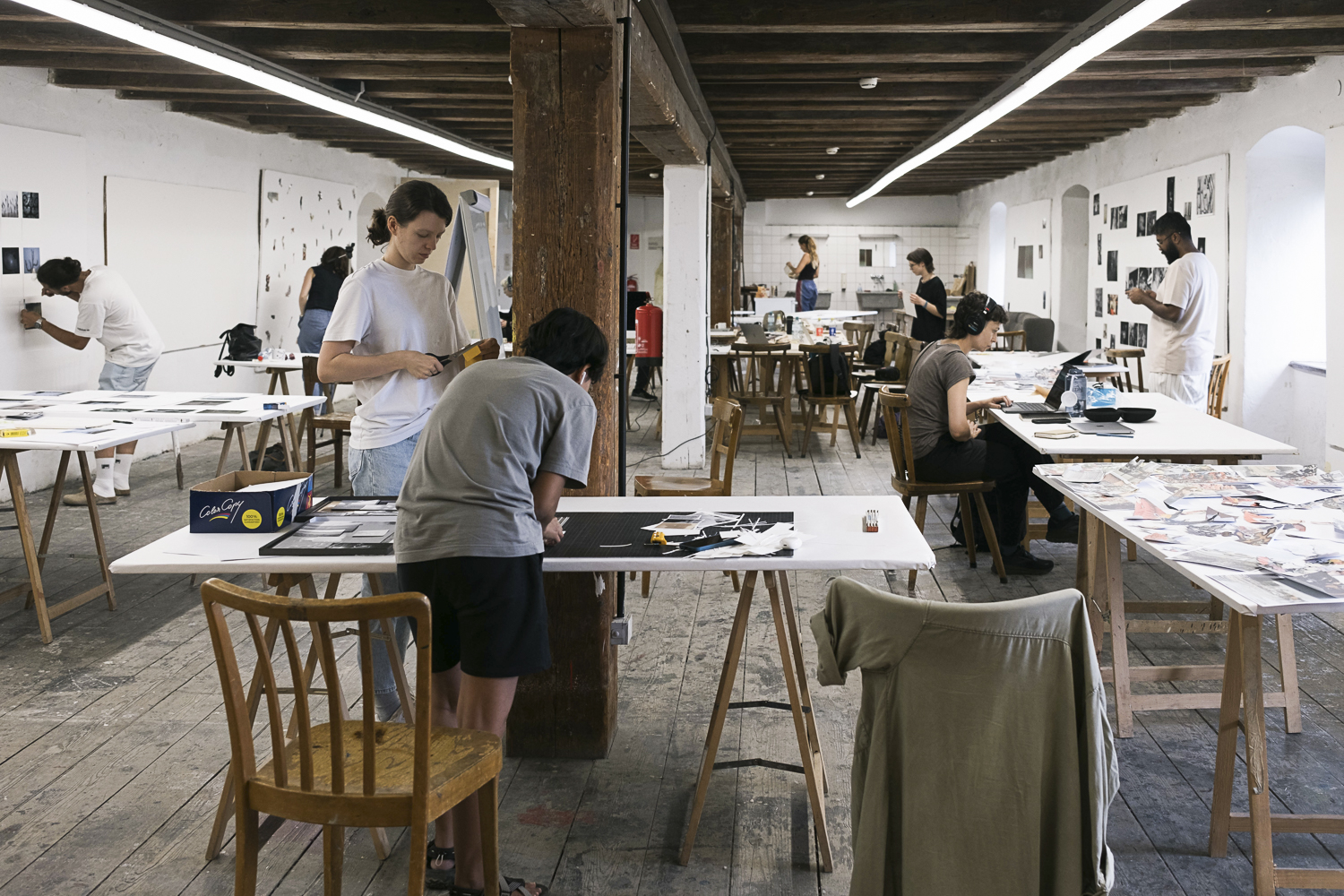

Summer Academy, photos by Helena Kalleitner.
World building is a pivotal process in literature for constructing immersive worlds within the confines of a story. It involves creating intricate landscapes, cultures, histories, and arrangements unique to the narrative universe. It not only provides a backdrop, but also adds depth, texture, and authenticity. The author invites readers into these alternate realities through detailed descriptions, consistent imagery, and richly developed characters.
The course will use ‘world-building’ as a basis for expansion to assess and gain a deeper understanding of how a photo series can develop further. What do our immediate natural environment and infrastructures represent about the current time or the future past? How do we utilize weather patterns, light, and atmosphere to introduce various cycles? How do form, color, or their absence influence different mind states? By examining the spatial histories of a place, utilizing personal accounts to shape directives, and selecting from various modes of image-making, distinctive qualities can be attained within a body of work.
Participants are encouraged to bring at least one ongoing series they are currently pursuing or wish to commit to long-term. Through collective discourse and exercises, one-on-one interactions, and artist-led lectures encompassing personal practice and other relevant works in photography, film, and books, the module aims to encourage students not to limit themselves to being image producers but also to become auteurs of their work.
︎ https://www.summeracademy.at/en/kurse/constructed-worlds-breaking-down-a-photo-series/
AT THE EDGE OF LAND
‘At the Edge of Land‘ is a group exhibition that delves into the intricate and often concealed relationships between landscapes and trade. It encompasses unexpectedly interconnected geographies, resources and commodities, going back and forth between land and sea to tell stories of erosion and extraction. It challenges ideas of emptiness and development, shedding light on the regions and people on the margins of trade routes.
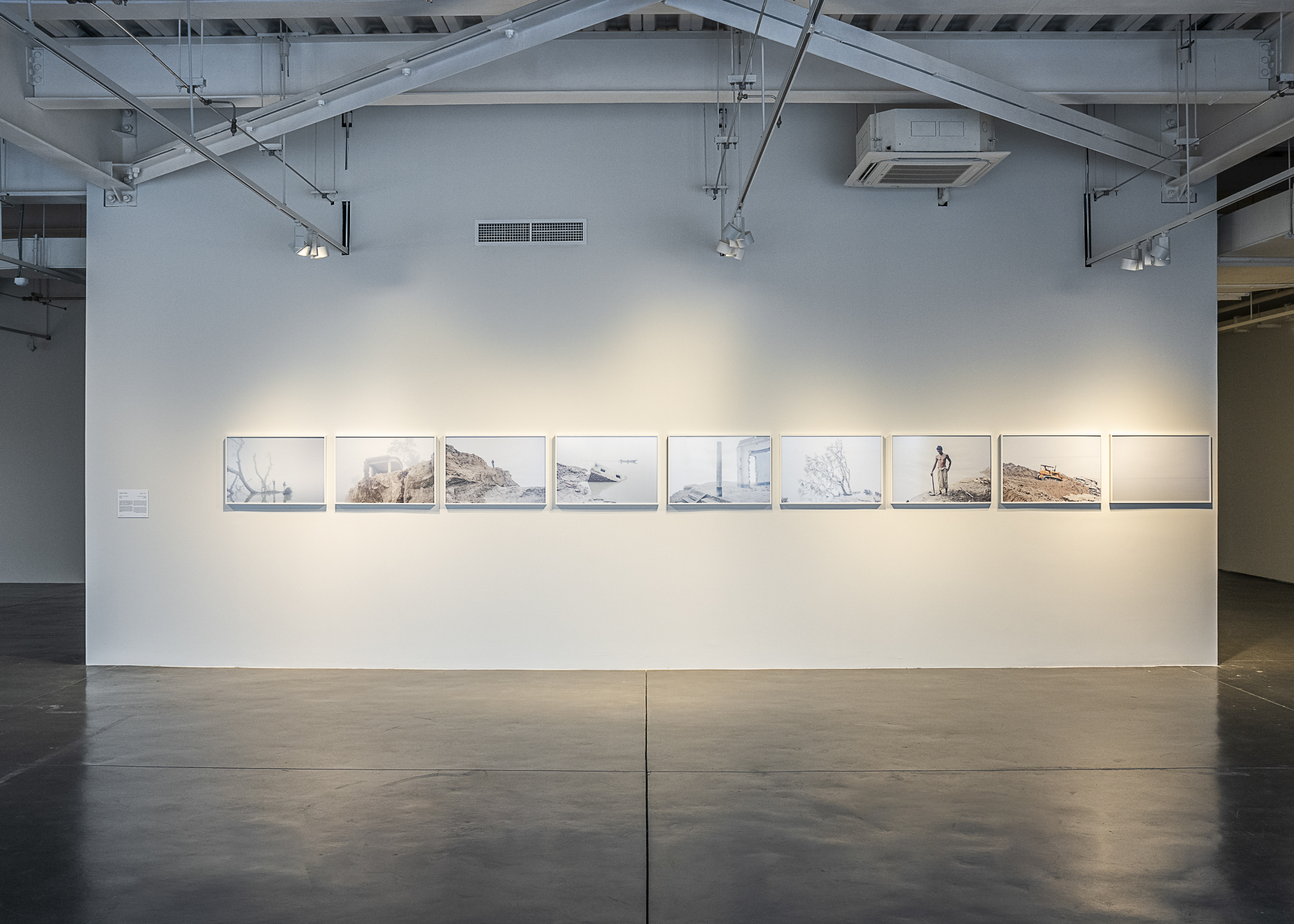

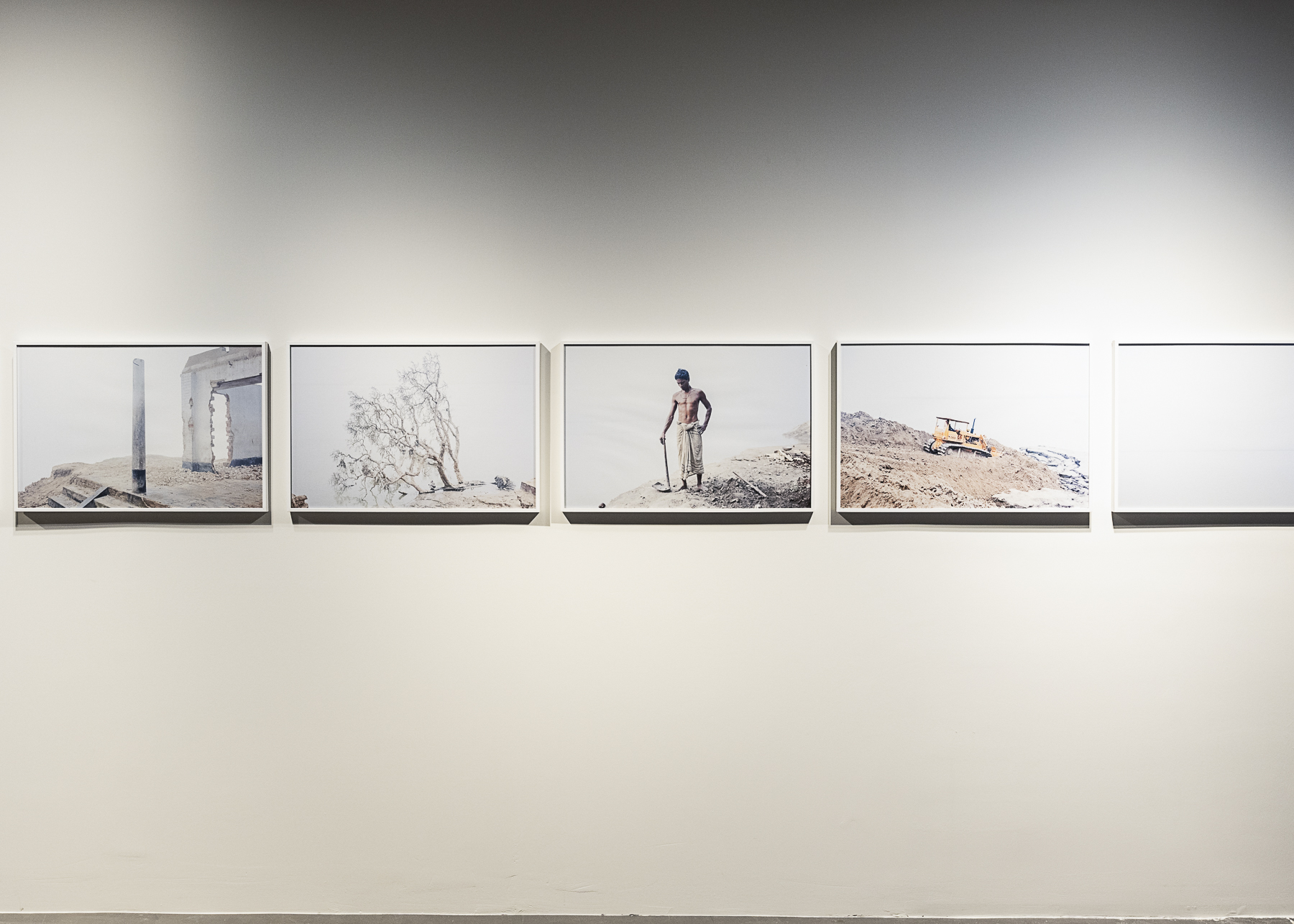
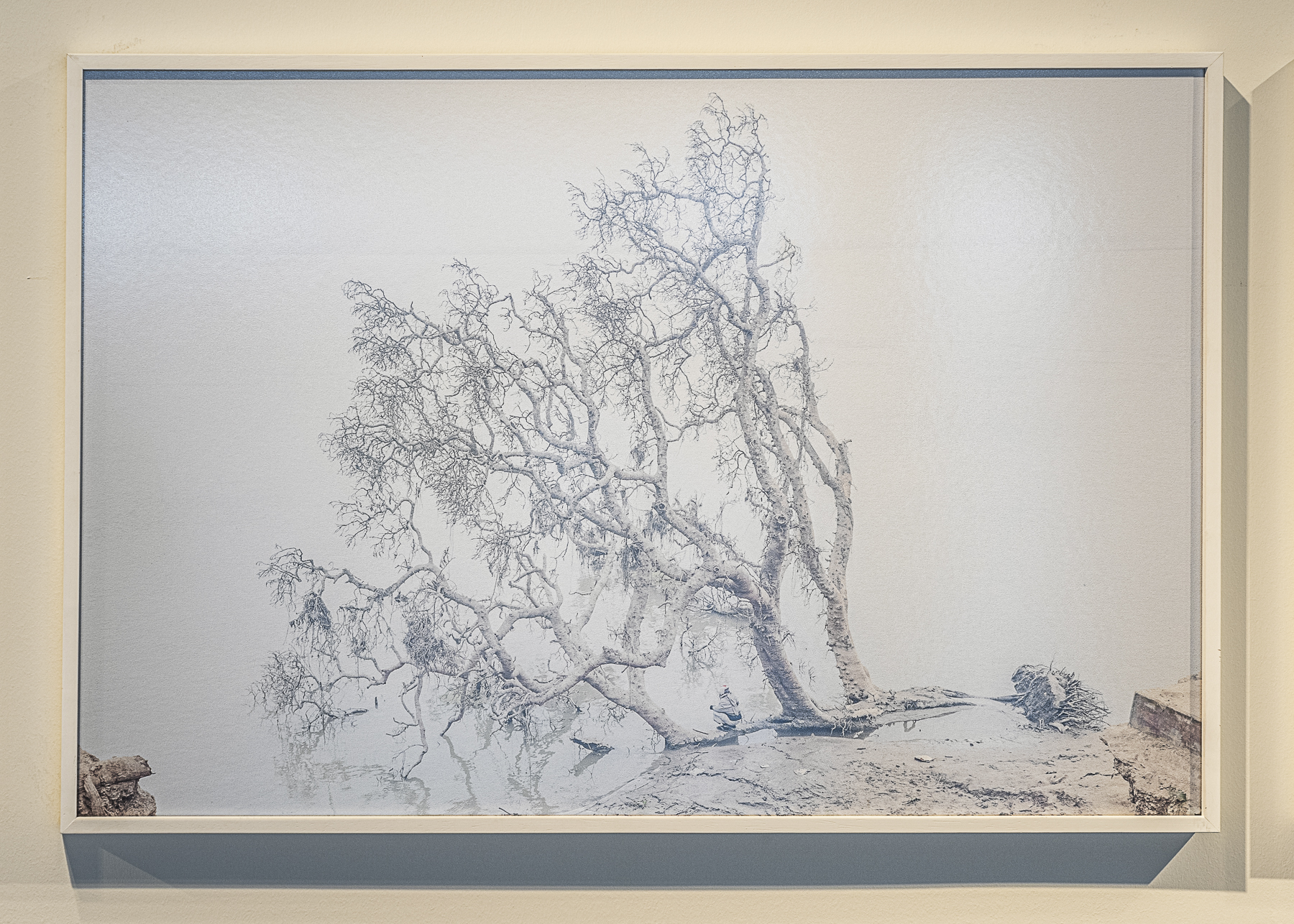
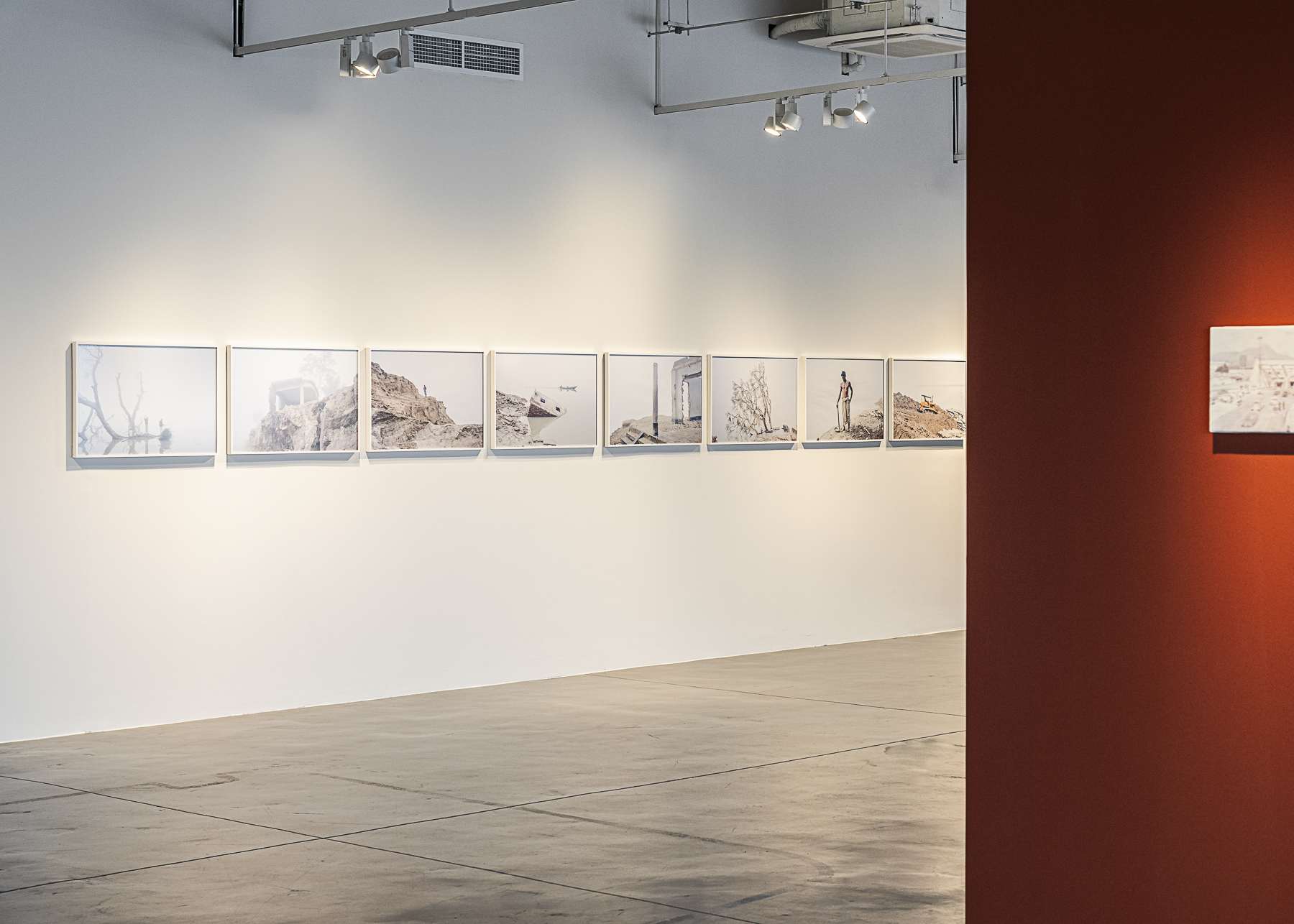
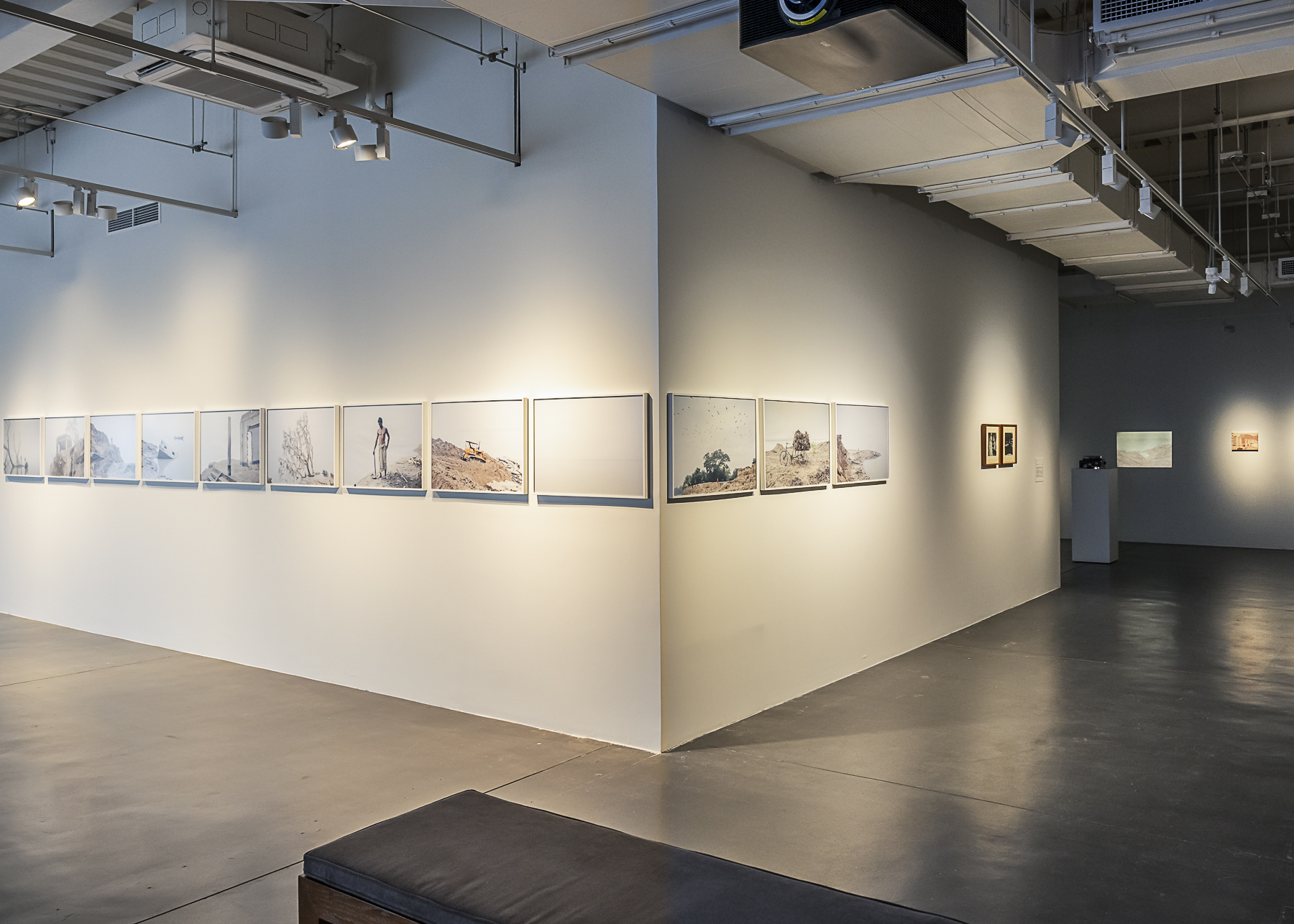
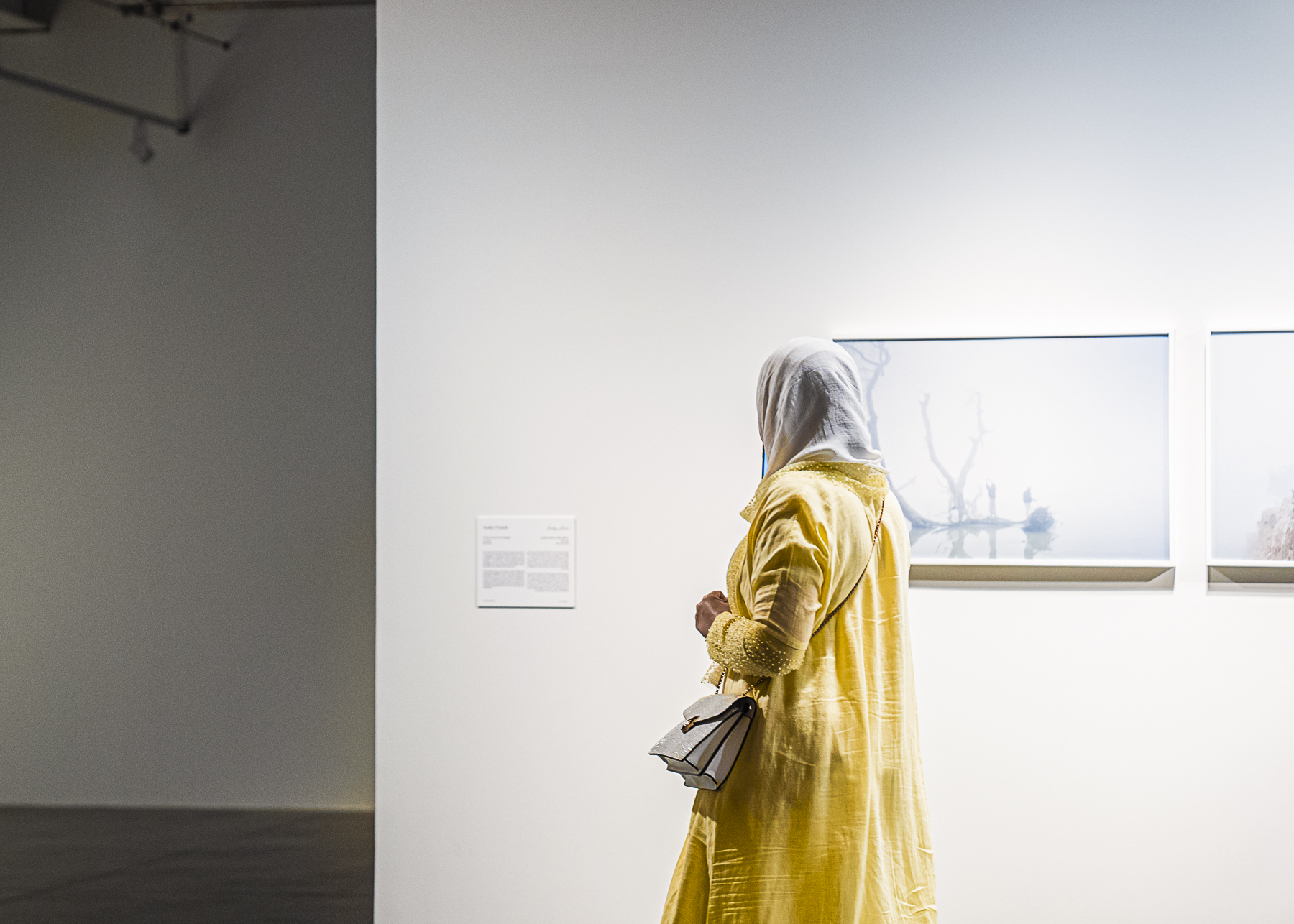
installation view at Hayy Jameel, Jeddah. Courtesy of Art Jameel. Photography by Mohamed Alaskandrani
At the Edge of Land
Hayy Arts. Free and open to all
Sunday – Thursday: 10 am – 8 pm
Friday: 2 pm – 10 pm
Saturday: 12 pm – 8 pm
Tuesdays: Always closed
ArtistS:
Jananne Al-Ani, Tarek Al Ghoussein, Iosu Aramburu, Au Sow Yee, Chihoi, Bady Dalloul, Aref El Rayess, Daniele Genadry, Ho Rui An, Hiwa K, Ranjit Kandalgaonkar, Lala Rukh, Hira Nabi, Sarker Protick, Sim Chi Yin, Joar Songcuya, You Khin and Zarina.
At the Edge of Land
16 NOVEMBER 2023 - 13 APRIL 2024
Hayy Arts. Free and open to all
Sunday – Thursday: 10 am – 8 pm
Friday: 2 pm – 10 pm
Saturday: 12 pm – 8 pm
Tuesdays: Always closed
ArtistS:
Jananne Al-Ani, Tarek Al Ghoussein, Iosu Aramburu, Au Sow Yee, Chihoi, Bady Dalloul, Aref El Rayess, Daniele Genadry, Ho Rui An, Hiwa K, Ranjit Kandalgaonkar, Lala Rukh, Hira Nabi, Sarker Protick, Sim Chi Yin, Joar Songcuya, You Khin and Zarina.
Curated by Art Jameel curator Lucas Morin, ‘At the Edge of Land’ brings together works from the Art Jameel Collection, in addition to loans and new commissions by international artists, many of whom are showing their work in Saudi Arabia for the first time. The selection of artists and artworks traces the trade route on which Jeddah is located – the busy maritime path connecting East Asia and Europe via the Red Sea and the Suez Canal.
The exhibited artists share stories of crossing lands, canals and rivers; documenting disappearing landscapes and giving a voice to their communities, challenging the inevitability of loss. They depict houses clinging to eroded coastlines, sand extracted to create distant artificial islands, and seamen stranded in the desert. They look at ports and containers and listen to the sound of immense ships waiting to be dismantled. They reveal the ways in which economies are interconnected and draw parallels between the movement of goods and the movement of people.
The exhibited artists share stories of crossing lands, canals and rivers; documenting disappearing landscapes and giving a voice to their communities, challenging the inevitability of loss. They depict houses clinging to eroded coastlines, sand extracted to create distant artificial islands, and seamen stranded in the desert. They look at ports and containers and listen to the sound of immense ships waiting to be dismantled. They reveal the ways in which economies are interconnected and draw parallels between the movement of goods and the movement of people.
COLOMBOSCOPE


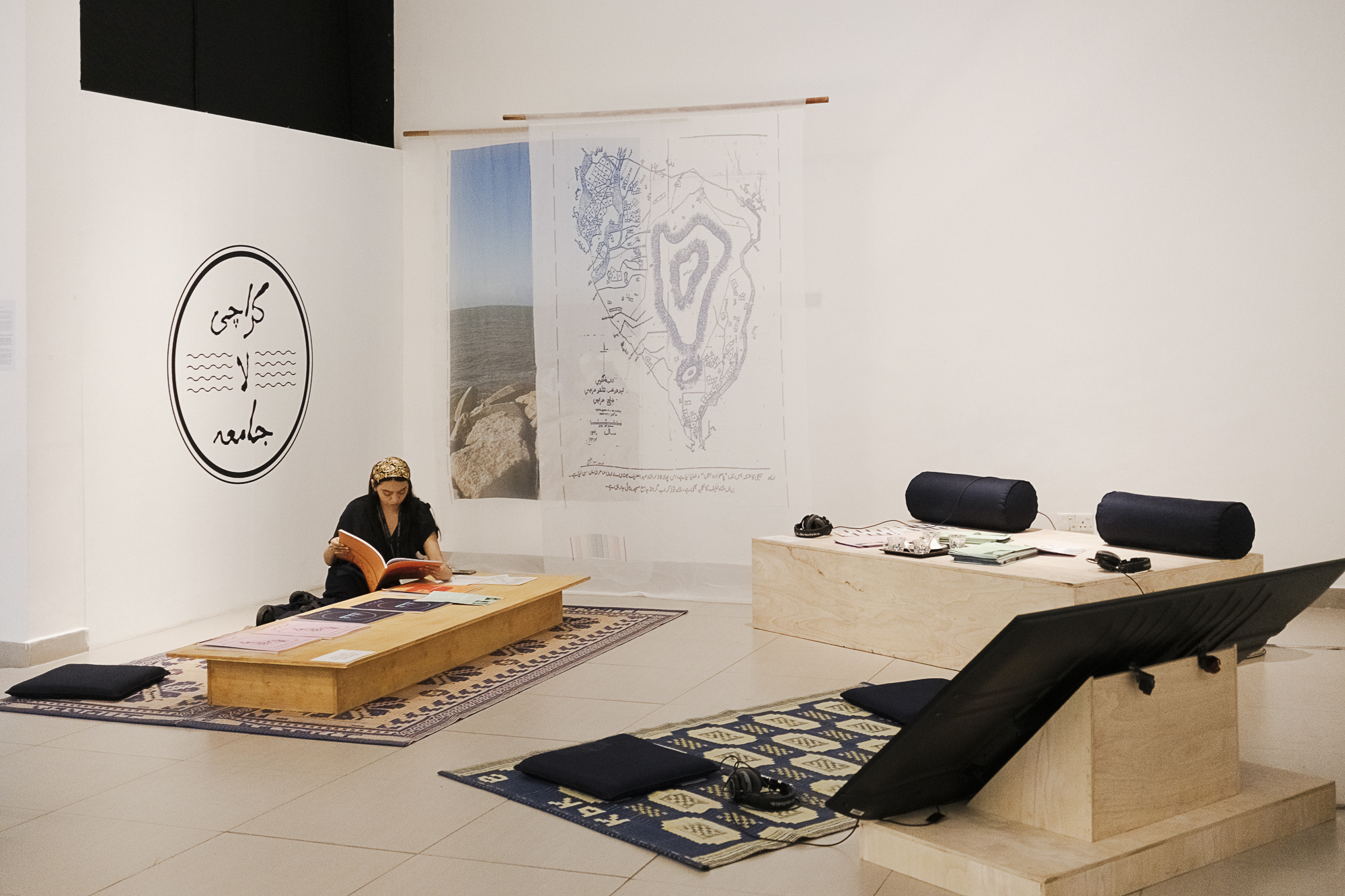

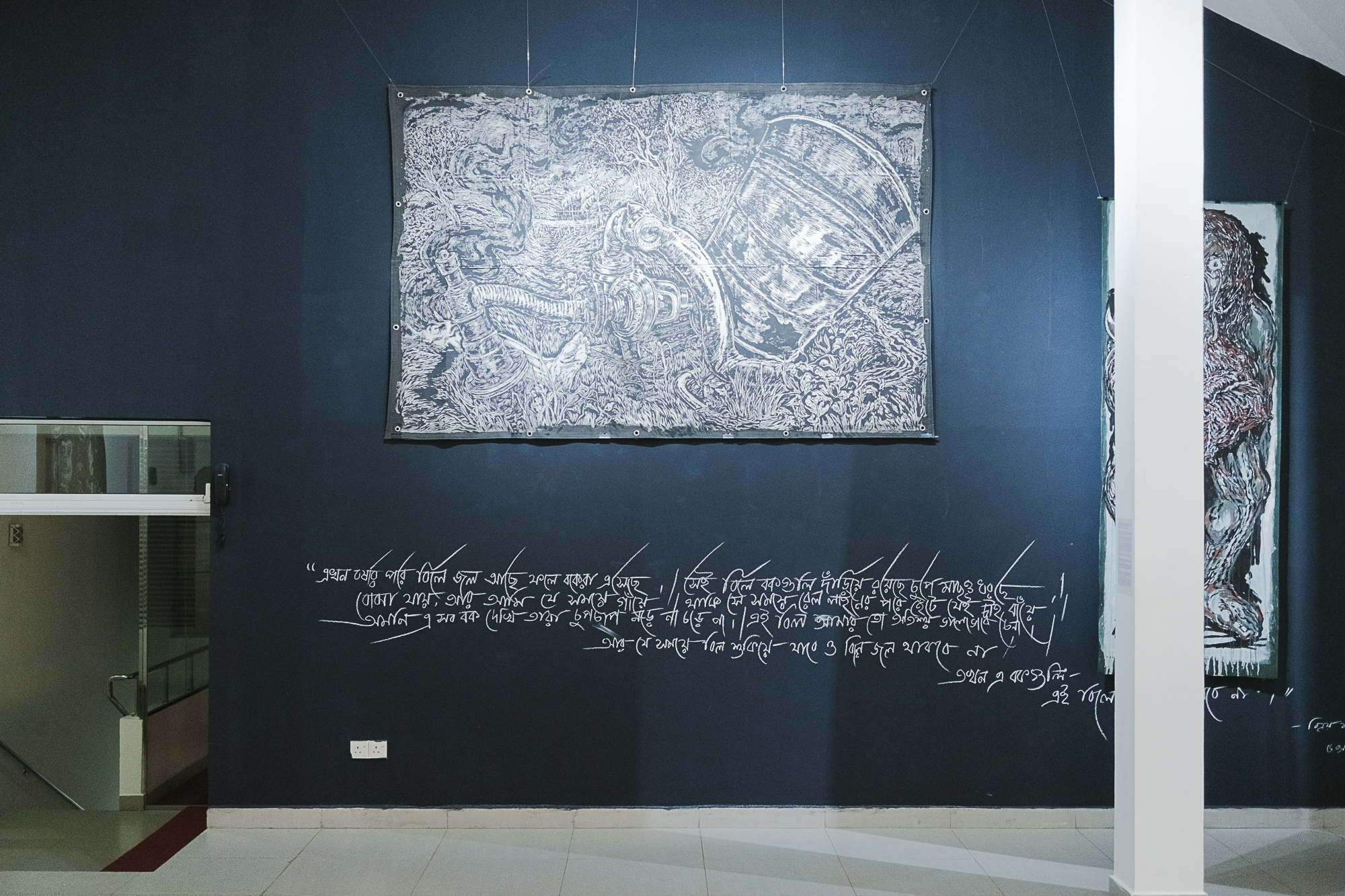


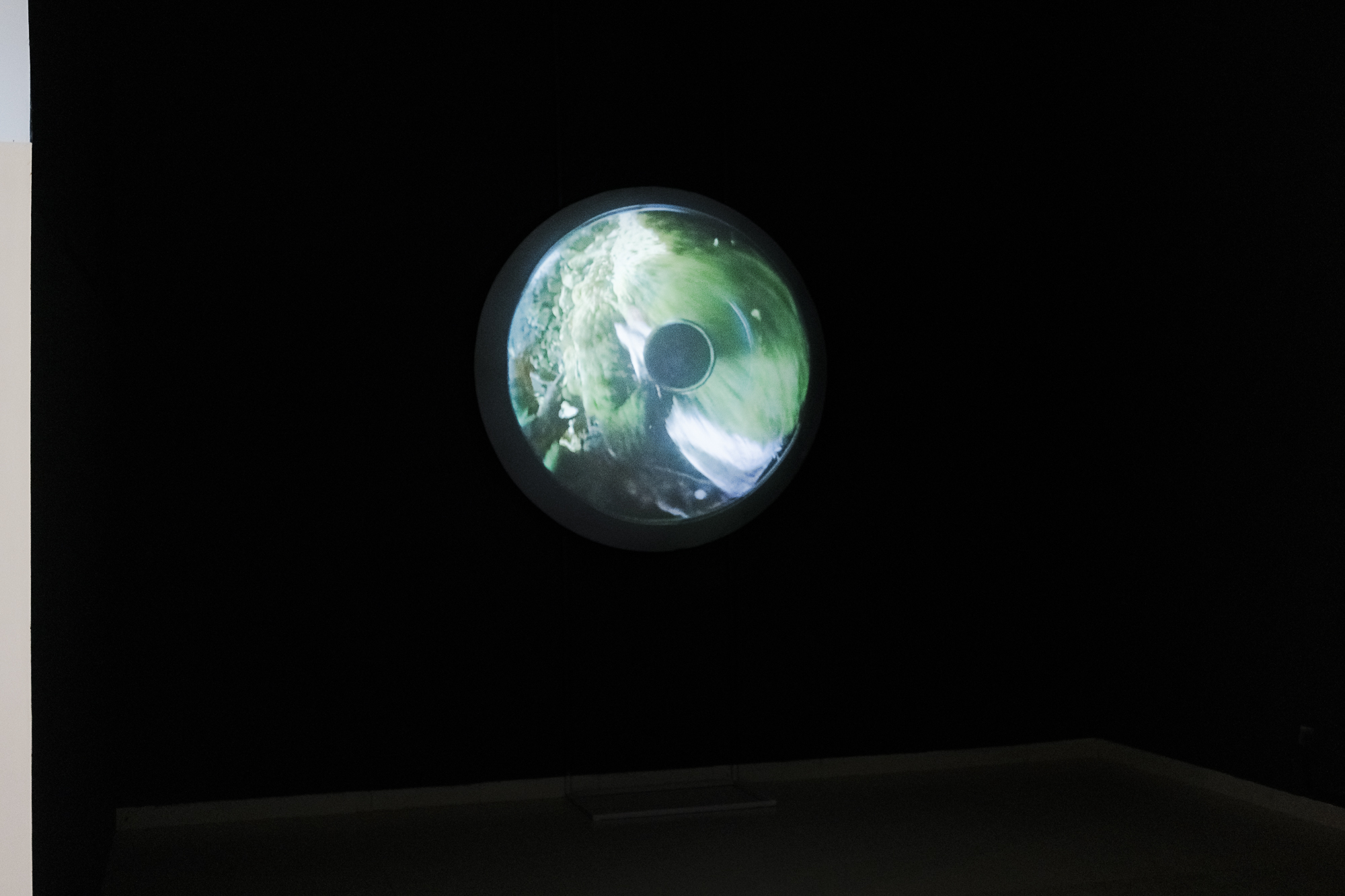
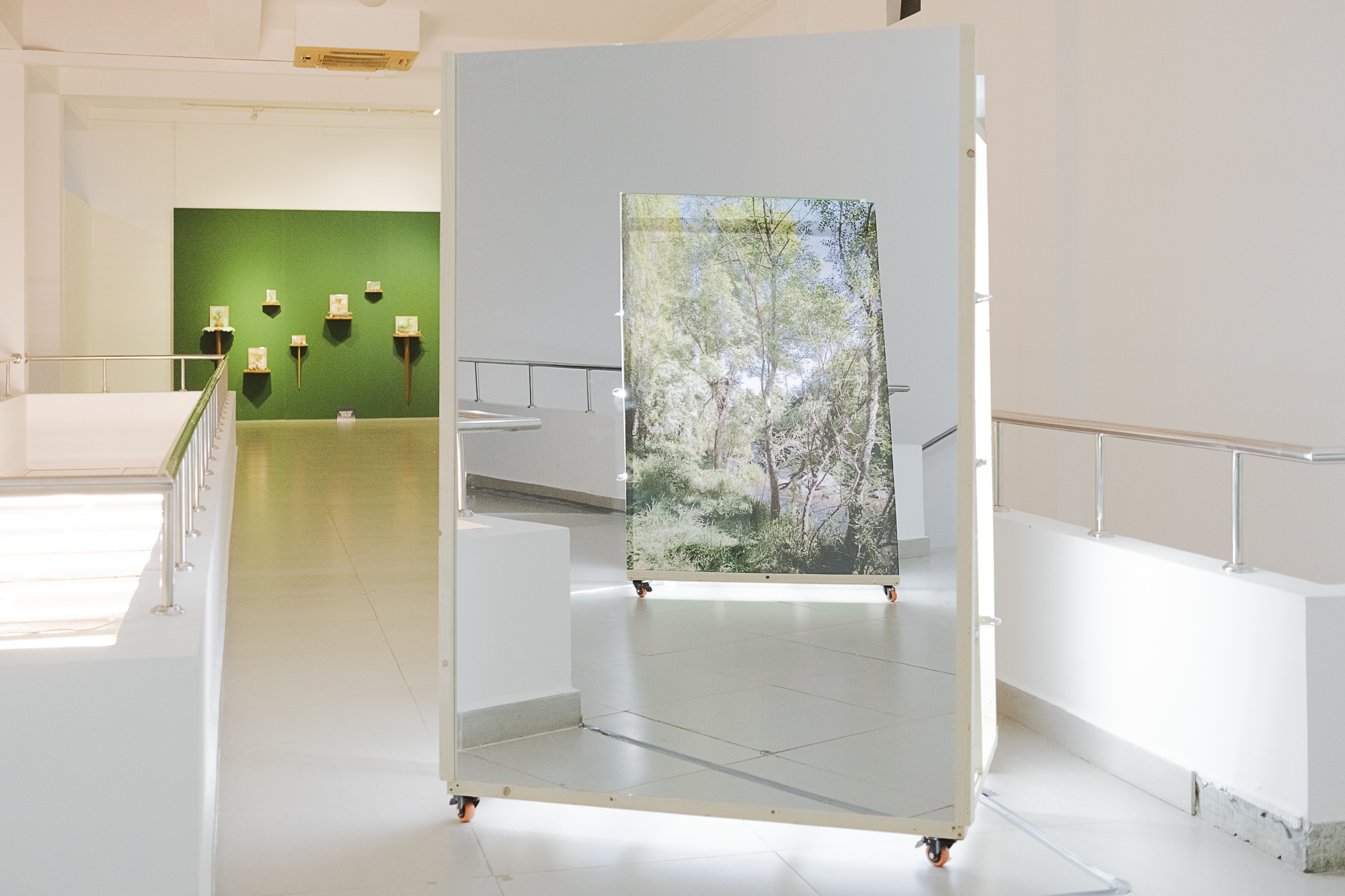








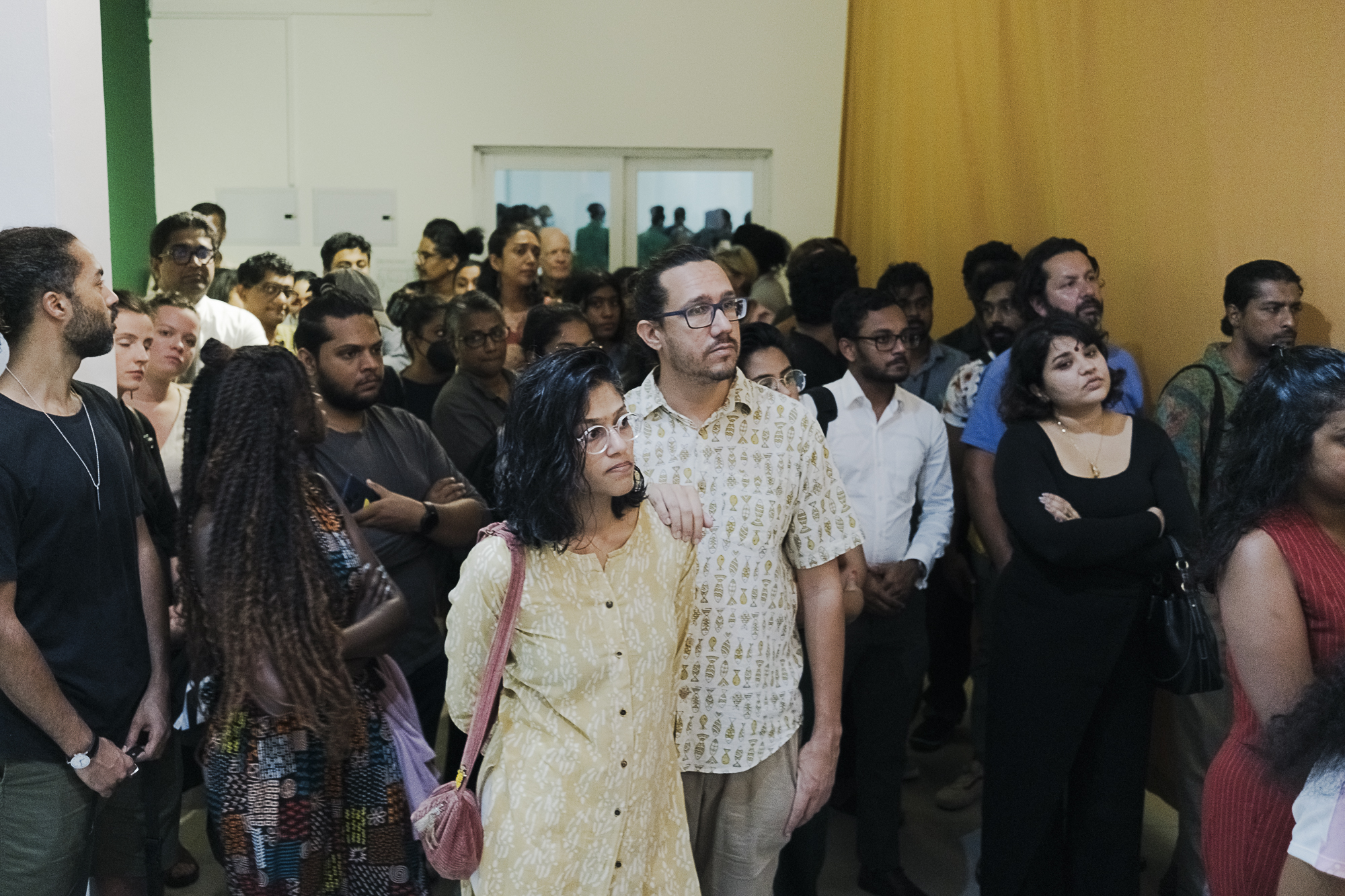
way of the forest
18 - 28 January 2024 / Colombo
curated by Sarker Protick, Sheelasha Rajbhandari and Hit Man Gurung. with artistic director, Natasha Ginwala.
Over 40 Sri Lankan and international artists | conversations • mushroomings • excursions • performances • workshops • concerts • open air cinema • listening experiences